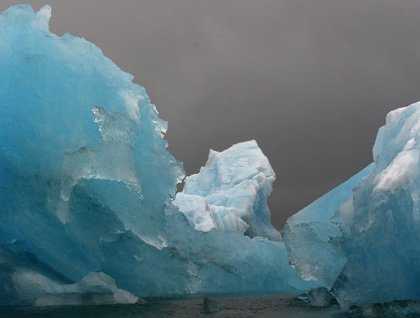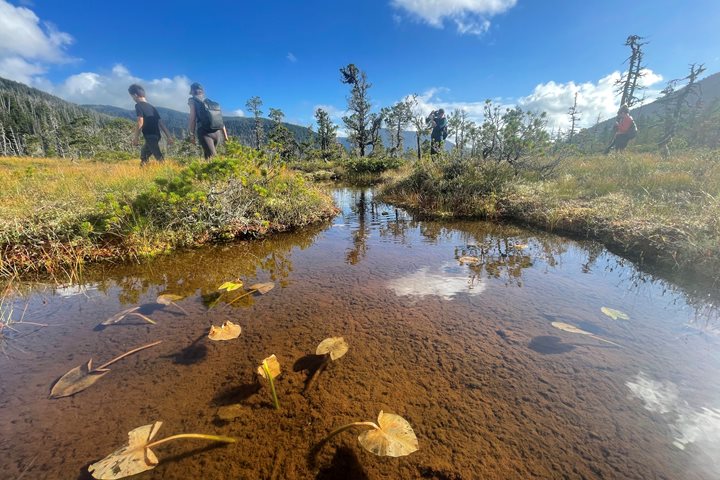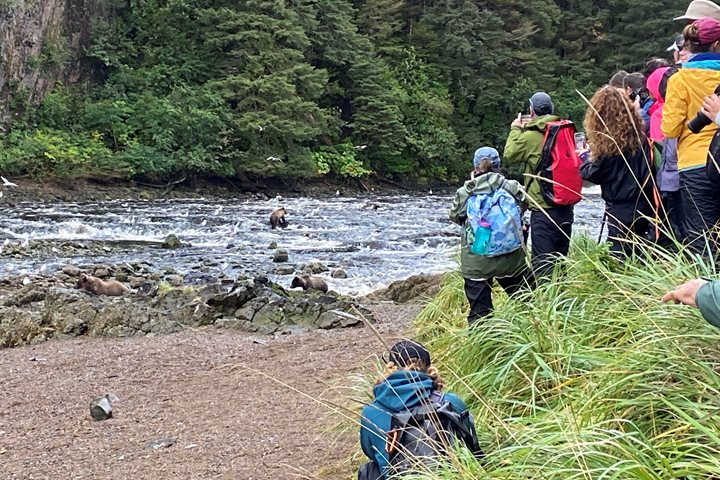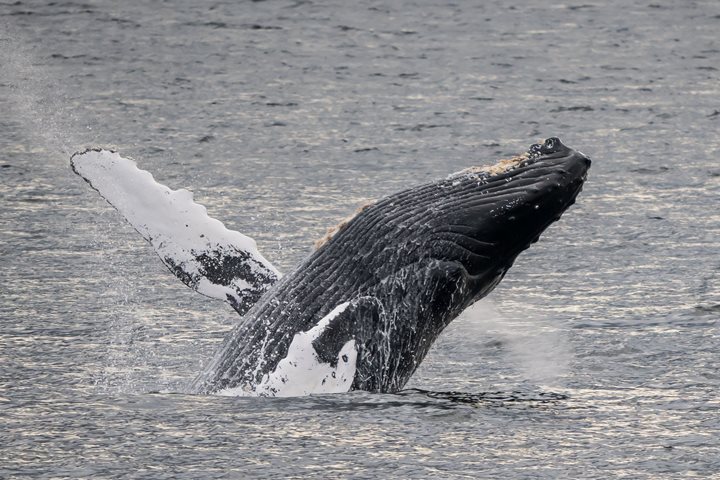Beautiful Alaska was difficult to see as we cruised through dense fog toward LeConte Glacier’s fjord. Rain or shine glaciers produce spectacular and abstract works of art in the form of icebergs that calve into the sea and are pulled by tides out of the fjord. These amorphous masses of solid ice are usually white on their tops due to trapped air scattering light, the lower 80 to 90% is hidden. Shallow bays during a low tide trap the floating ice and during an ebbing tide show more of the normally hidden underwater sections of icebergs. Those were the conditions this morning. Our expedition landing craft were able to wind in and out of the icebergs studying melt lines, balance points, and avoiding disasters like being crushed by their habit of rolling. The shapes and colors are often perfect for stunning photographs.
Later in the day National Geographic Sea Bird cruised towards Petersburg, a picturesque fishing town with a mostly Norwegian heritage. This community thrives on catching salmon, halibut, sablefish, cod, herring, several crab species, and Petersburg pink cocktail shrimp. These provide fishing for much of the year for the 3,200 people who live here. The town has rosemaling decorating some of the buildings and brass flatfish inlaid in the concrete of the local sidewalks that few tourists tread upon. A traditional Norwegian boat is displayed next to the monument for fishermen that lost their lives at sea.
We had many choices for ways to explore the area. Many walked to a spectacular muskeg or bog on a well-built boardwalk, gazed upon acres of sphagnum moss dotted with small ponds, and examined the sticky leaves of carnivorous sundews. Others rode bicycles around town and enjoyed the freedom of exploring by bike. The town is a friendly, clean place so walking down side roads and looking into alleys has the appeal of learning a bit more about this place.
There were also dock walks that helped explain the complex workings of the fascinating fleet of purse seiners. They are often out fishing but today many of them were here for us to see. These million dollar boats have a seine skiff that is able to pull out a 1,200 foot net that goes down over 100 ft and surrounds a school of pink or other species of salmon, the skiff driver hands over the lead line that is the purse string. One of the fishermen on board closes the net, they then put the net through a power block that is a large hydraulically operated pulley, pull much of the net in, empty the purse of the typically 2,000 fish by using a specialized brailing net to take fish out of the net then dump the rest into the boat and are soon ready to reset the net all within 45 minutes. Trollers, trawlers, long liners and gillnetters were also looked at as we walked along the dock.
This activity filled day soon ended in a fest with all-you-can eat fresh Dungeness crab and ribs. Many people had different experiences during the day so the dining room buzzed with conversation.







